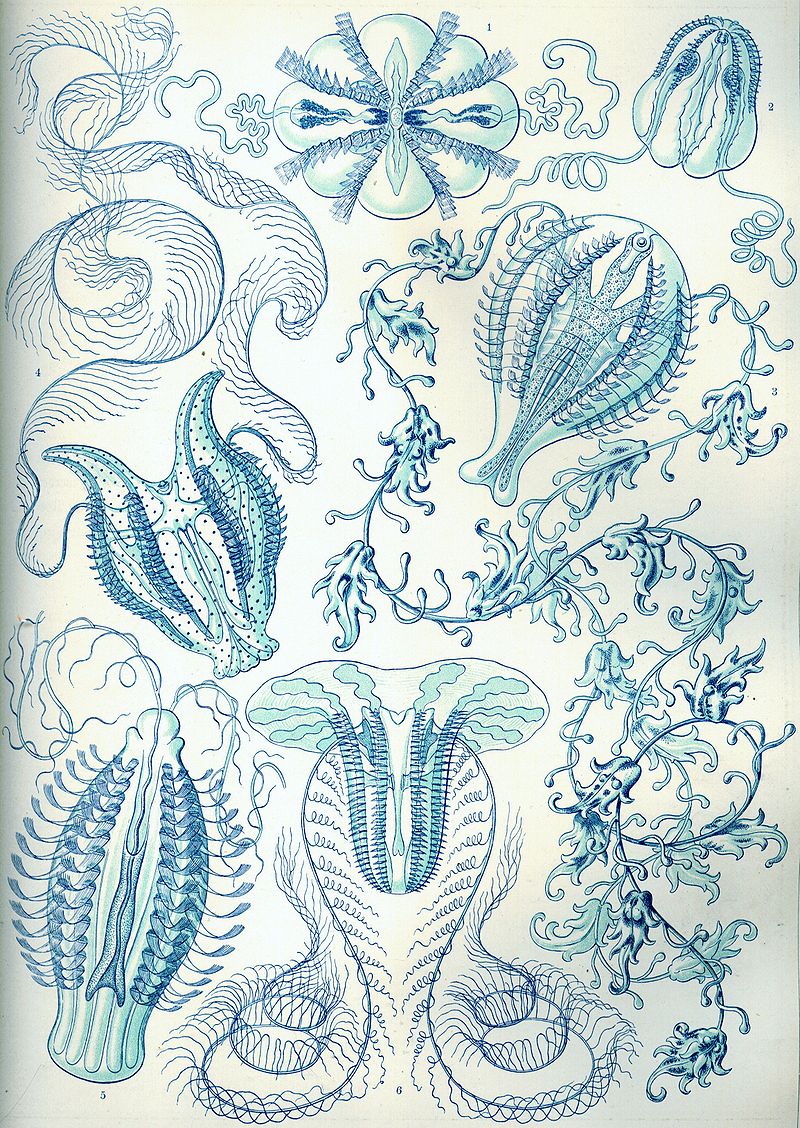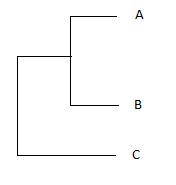Over the last few years, stupid people have gotten smarter about being stupid. If you look back at the creationist literature, it seems that there has always been quotemining going on. But relatively recently (in human lifetime terms), the ability to check all those quotes has become commonplace. As such, it’s not possible for people to misquote other people without getting called out for it [1].
But now, some of the stupid people are starting to get the picture. They need Real Science ™, not obviously fake quotemines [2]. So, they go to the literature.
The problem is that scientific literature, while seemingly a strong indicator of veracity and gravitas, has had some problems lately. These are not insurmountable, but they present a minefield of difficulties for the unwary. There have been several recent busts of “peer-review rings” in which papers that wouldn’t pass my kid’s elementary teacher have gotten published in decent journals.
There are several problems. One is that there are so many scientists trying to publish so many articles (publish or perish) that it’s hard to find reviewers for all of them. Another is that some papers are so specific that the “qualified” reviewers are pretty much the people in one principle investigator’s lab. A third is the “pay to publish” journal which makes an income not from subscriptions, but from the authors. Then of course we have the problem where reviewers might pass a paper just because it supports a particular ideological bias.
The best example of a bad paper is Seralini’s infamous GMO cancer paper. Which, even I (an amateur) found multiple problems with. All those issues were fatal to the conclusion, which was in no way justified by anything in the paper. I have found out that the paper has been republished (after being retracted), but since there were no changes to the paper, the conclusion that it is rubbish stands.
At this point, just announcing that this is a “peer-reviewed” paper isn’t enough anymore. You can find a “peer-reviewed” paper supporting just about any topic from anti-climate change to anti-vaccine. You cannot find papers on gun violence in the US though thanks to the US congress, but I digress.
So now we have anti-science people using bad science to support idiotic ideas for ideological reasons. And there’s not a whole lot that non-experts can do about it.
This is a much worse concept than just quotemining, which is almost trivial to find and report. This requires that someone read, in detail, a peer-reviewed paper. That’s really hard for a non-expert. It’s hard for some graduate students, much less the average guy who is just casually interested in science. Just reading a paper is hard. For example, here’s the first paragraph of the conclusion from a recently published paper.
The mechanical behaviors of DNTs were acquired based on a series of tensile tests performed using large-scale molecular dynamics (MD) simulations. To initiate the simulation, the widely used adaptive intermolecular reactive empirical bond order (AIREBO) potential was employed to describe the C-C and C-H atomic interactions.[17] This potential has been shown to well represent the binding energy and elastic properties of carbon materials. It should be noticed that the AIREBO potential usually suffers from a nonphysical high tensile stress which is originated from the fixed switching function.[18] To overcome this problematic issue, the cut-off distance is usually extended far from the original value 1.7 Å to ~ 1.9 – 2.0 Å.[19] For the DNT structure, our calculations suggest that a cut-off distance between 1.94 – 1.95 Å for AIREBO potential would result in a comparable yield strain with that obtained from the reactive force filed (ReaxFF)[20] (see discussions in Supporting Information). Thus, a cut-off distance of 1.945 Å is adopted in all the simulations.
Yeah, I got nothing for you. I understand it in a very basic way, but materials science is not my thing. The paper sounds desperately cool, but how can the non-material scientist know whether these MD simulations are appropriate? Is the 1.945 angstrom cut-off distance a normal or really weird choice? They talk about why they did it, but I can’t explain even what it is [3].
So when a person you’re talking to suddenly starts spouting off about this paper and that paper that support his ideas, how can someone, even someone who has an above average education, start talking rationally with them? I’ve taught myself a lot about evolution. At least one former professor has suggested that I have given myself the equivalent of at least a Master’s degree in evolutionary theory. But I don’t know anything about soil conservation or pesticide transmission through an ecosystem.
In general, the people who do know, are shouted down as “shills” or “elitist” or attacked by congressional committees that don’t understand their work, but know that one of their contributors doesn’t like it.
How to deal with this?
First, ask the person who quoted the paper to explain it to you in their own words, in simple terms. If they can’t, then they don’t know what’s going on either. In fact, 98% of the time, the person will start insulting you and saying how it’s obvious or saying your too stupid to understand. If that happens, you’ve won. They don’t know what the paper is really about either.
Second, I’ve found that actually finding the paper and then asking them to explain one of the diagrams works too. Remember the vast majority of the people will not have even seen these papers. They heard it from a person on a forum. Just ask them what the units are on the x-axis of the graph on page 4 is. If they can’t answer that, then they haven’t really read the paper.
Now, you cannot dismiss the paper because of this. But you can certainly dismiss the person’s claims based on the paper. If they haven’t read it, then they are in no better position to talk about it than you are. Note that this won’t mean anything to them, but all the intelligent people will agree with you.
Finally, I promised a brief discussion on comb jellies. What’s a comb jelly you ask?

Comb jellies, Ctenophores, are a group of organisms that are superficially similar to some cnidarians, specifically the jellies. No, I don’t say “jelly fish” because they aren’t fish. They aren’t even close to fish.
The “comb” comes from the cilia (tiny mobile extrusions) that propel the creatures. They are not closely related to humans (nor are the cnidarians). But the exact relationship is the subject of a relatively strong debate in science circles right now. In fact, an article I was reading is what brought this whole subject to me.
Traditionally, the sponges (porifera) are the sister group to all other animals. That is, the sponges are not on the same evolutionary branch as all other animals.
In the diagram above, A and B are sister groups. C is the sister group to A/B (and I’m probably not using the correct formatting, maybe Nick will pop in and correct me).
The question that I bring up here is if A and B represent all animals, except for the group in C, then what is C?
As I said, traditionally, C was porifera (sponges). But there’s been some significant evidence that suggests that C is actually the comb jellies. There are five recent papers that suggest this (I can get them for you if you want them, but it’s not really important to my point).
But just a month ago, a new paper was published that showed those other 5 papers were flawed. They suggest that the traditional designation of sponges is correct [4].
Thus, while strong support for Ctenophora-sister may be obtained from phylogenomic datasets (2–6, 46, 55), our analysis suggests these results are caused by undetected systematic bias. Therefore, several recent studies whose conclusions are based on the assumed accuracy of Ctenophora-sister (e.g., 56–58) should be reassessed in light of alternative phylogenetic hypotheses. Our results do not support the currently emerging point of view according to which the origin of complex characters, such as nervous systems, was far more complicated than previously thought (e.g., 7, 8). More broadly, our study highlights the danger of relying solely on the presumed power of large datasets rather than on the best possible modeling of the data and carefully designed phylogenetic analyses aimed at correcting systematic errors.
In other words, these authors feel that the other papers had problems with their analysis that caused them to come to the wrong conclusion.
Note that last bit, “a carefully designed phylogenetic analysis”. To an expert, that’s probably a glaring indictment and an obvious flaw (at least once it’s pointed out [5]). But to even someone like me who’s studied this stuff quite a bit, it’s not an obvious flaw.
The point here isn’t that those 5 papers are wrong and the 1 is correct (which, I tend to support). The point here isn’t that scientists make mistakes.
The point is that, in our super specialized world, it’s becoming harder and harder to spot errors like these (whichever one is in error, because they can’t both be correct). And that’s a problem, because it gives the anti-whatever groups an opening. A way to claim legitimacy, whether it exists or not.
What’s worse is that there are fewer and fewer people capable of calling them on bullshit claims. Unless you know where to go for real expert advice, then you (me, everyone) can be confused by empty rhetoric and a couple of papers.
Everyone has to be skeptical, all the time, about everything. Skeptical doesn’t mean rejecting everyone. It means, you withhold judgement until sufficient evidence is in place and/or you know people who are experts and who have well supported positions and can explain why.
I don’t think it’s argument by authority to talk to an expert in a subject and compare what they say to other well-known experts and then compare to what that guy on youtube says. When those experts can tell you what THEY think (not what you should think) and give good reasons why, I think it’s fair to say that you can make a judgement based on that, provided that you are willing to change your mind if new evidence comes in.
Like this think with the comb jellies. I’m will stick with the sponges being the sister group of all other animals for now. Maybe the comb jelly side can get the same results after correcting for some problems. Maybe they can improve their results. Maybe then, I’ll agree with them.
______________________________________________
- Which makes it all the more surprising when people still use quotemines. Either they are too dumb to realize that they will be called out for it or they think that their readership is too dumb to check. Either way, it doesn’t say much for them as authors. For example, here and here.
- Here’s a hint, when you see a creationist quote Stephen J. Gould as supporting a creationist idea, that’s an obvious problem. Gould has written hundreds of papers and books supporting evolution.
- Here’s the lay-person review of the article. Diamond nanothread just sounds awesome.
- Pisani, D. et al. Genomic data do not support comb jellies as the sister group to all other animals. P Natl Acad Sci Usa (2015). doi:10.1073/pnas.1518127112
- I can’t count the time that dozens of highly trained experts missed an obvious flaw until someone finally discovered it. Then everyone said, “Oh yeah… dammit”.

